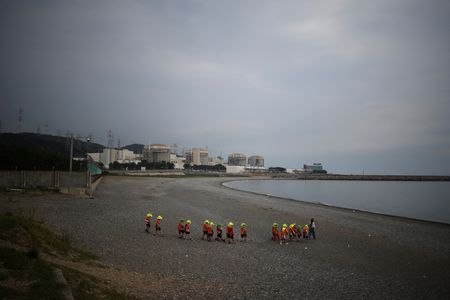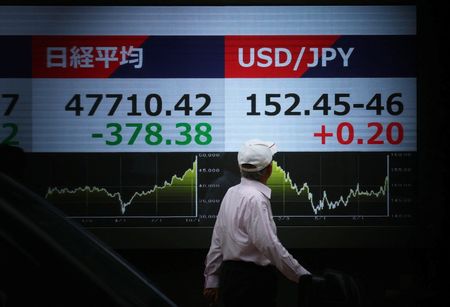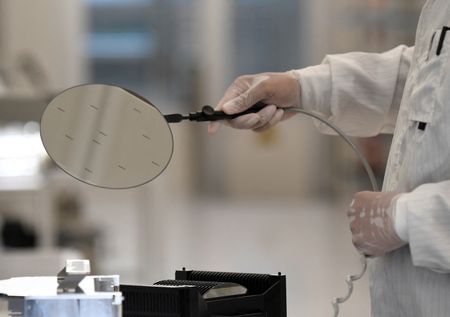By Joyce Lee
SEOUL (Reuters) – South Korea finalised on Friday a new energy mix plan that envisages the construction of two new large-scale nuclear power plants and one small nuclear power reactor by 2038, the country’s industry ministry said.
The plan also aims to secure renewable energy accounting for an average of 7 gigawatts (GW) per year by 2030, the ministry said in a statement.
South Korea said its nuclear power generation is expected to grow from 180.5 terawatt-hour (TWh) in 2023 to 248.3 TWh in 2038. The portion of nuclear power generation in its energy mix is also expected to grow from 30.7% in 2023 to 35.2% in 2038.
The plan by Asia’s fourth-largest economy, which imports about 98% of its fossil fuel consumption, also aims to increase renewable energy more than fourfold from 49.4 TWh in 2023 to 205.7 TWh in 2038.
This would lift the portion of renewable energy in South Korea’s energy mix from 8.4% in 2023 to 29.2% in 2038.
With this, the proportion of carbon-free power generation, including nuclear and renewables, is forecast to reach 70% by 2038.
South Korea is targetting power generation of 157.8 GW by 2038, outstripping the capacity of planned facilities that should be able to generate 131.2 GW.
South Korea has 26 operational large-scale nuclear power reactors, and is currently building four more.
Two additional large-scale nuclear power reactors are expected to be needed in 2037-2038 to make up part of the difference, the statement said.
South Korea also plans to adopt a small modular reactor (SMR) that will provide 0.7 GW of power starting from 2035-2036.
The country aims to reduce coal power generation from 184.9 TWh in 2023 to 70.9 TWh in 2038, and reduce its portion in the country’s energy mix from 31.4% in 2023 to 10.1% in 2038.
South Korea has retained its plan to convert 28 units of aging coal power generation facilities to liquefied natural gas, while aiming to convert 12 additional coal power units due to close in 2037-2038 to carbon-free power sources such as hydropower, hydrogen and ammonia mix power generation.
(Reporting by Joyce Lee; Editing by Ed Davies)










